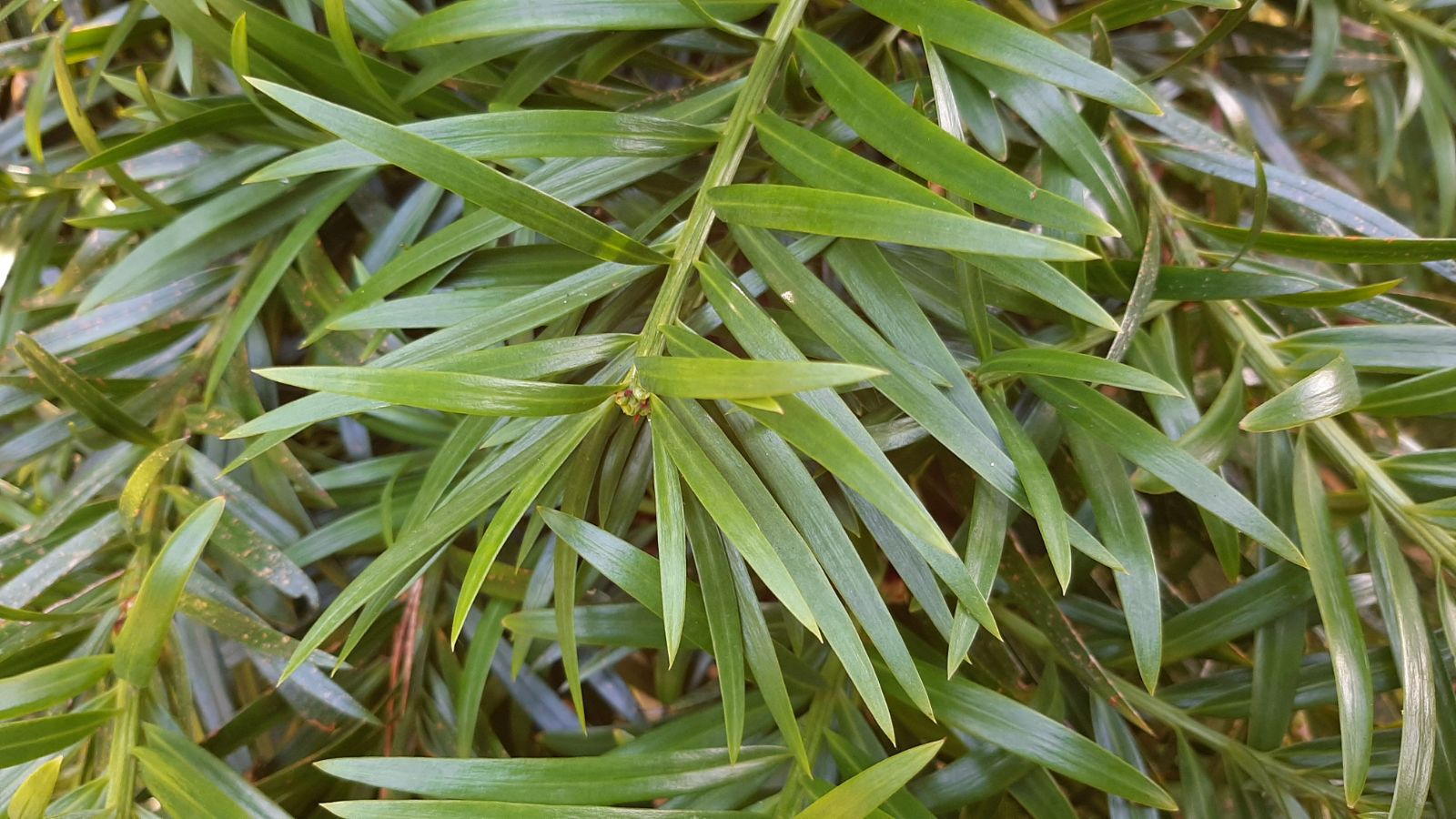Podocarpus lambertii
Sponsor
Kindly sponsored by
The British Conifer Society in memory of Derek Spicer VMM, founder member.
Credits
Tom Christian (2023)
Recommended citation
Christian, T. (2023), 'Podocarpus lambertii' from the website Trees and Shrubs Online (treesandshrubsonline.
Genus
Common Names
- Pinheiro-Bravo
Synonyms
- Nageia lambertii (Klotzsch ex Endl.) F. Muell.
- Podocarpus lambertii var. horsmanii Silba
- Podocarpus lambertii var. tigreensis Silba
Other taxa in genus
- Podocarpus acutifolius
- Podocarpus acutifolius × lawrencei
- Podocarpus acutifolius × nivalis
- Podocarpus acutifolius × totara
- Podocarpus brassii
- Podocarpus costalis
- Podocarpus drouynianus
- Podocarpus elatus
- Podocarpus elongatus
- Podocarpus guatemalensis
- Podocarpus henkelii
- Podocarpus laetus
- Podocarpus laetus × nivalis
- Podocarpus latifolius
- Podocarpus lawrencei
- Podocarpus lawrencei × nivalis
- Podocarpus macrophyllus
- Podocarpus matudae
- Podocarpus milanjianus
- Podocarpus nakaii
- Podocarpus neriifolius
- Podocarpus nivalis
- Podocarpus nubigenus
- Podocarpus oleifolius
- Podocarpus parlatorei
- Podocarpus pilgeri
- Podocarpus pseudobracteatus
- Podocarpus salignus
- Podocarpus spinulosus
- Podocarpus totara
Tree 10–12 m tall, to 0.3 m dbh. Branches spreading; crown pyramidal at first, later rounded, irregular in older trees. Branchlets slender, finely grooved between leaf bases. Terminal buds small, subglobose, with imbricate, triangular, short-apiculate scales. Leaves spreading, usually directed forward, lanceolate to linear, 1–5 × 0.15–0.4 cm, straight to somewhat falcate, base gradually tapering, subsessile to short-petiolate, margins slightly revolute, ± parallel along central ⅔ of lamina, apex acute to pungent; tapering to apex and petiolate base, margins weakly revolute or ± flat; upper surface green to grey-green with midrib forming a weak, shallow groove along most of the lamina, often fading near the apex; lower surface dull whitish green with a more distinct raised midrib the full length of the lamina with stomatal bands either side. Pollen cones pedunculate, 1-several clusters of 2->8 cones, cylindrical, 5–12 × 1.5–2 cm, pink. Seed cones solitary on a slender peduncle 5–10 mm long, with 2 bracts which fuse to become a swollen, fleshy receptacle, 6–7 × 4–5 mm, ripening reddish-purple. Seed including the epimatium globose, glossy, 4–5 × 4–5 mm. (Farjon 2017).
Distribution Argentina NE Brazil S and SE
Habitat A drought adapted species occurring in diverse habitats including rocky grasslands, scrub, and in gallery forests especially in the east of its range. Its altitudinal distribution is poorly understood, but covers at least 900–1800 m asl.
Conservation status Near threatened (NT)
Three plants at Tregrehan (Cornwall, UK) planted 2006 have made handsome narrow spires to c. 5 m in 2022 (pers. obs.). The first order branches of all three are strongly downswept, accentuating their narrow profile and adding to their appeal; seemingly unharmed by the cold UK winters of 2009–2011, it would be worth experimenting with this species in a wider range of gardens and conditions. A young plant accessioned at Arboretum Kalmthuot, Belgium (20160136*A) survived the vagaries of the 2022–23 winter (A. Rammeloo pers. comm.). P. lambertii is also cultivated under glass at Edinburgh and in warmer regions outwith our study area, including in its native Brazil and in Australia; it was reported from 13 collections in BGCI’s Global Survey of Ex Situ Conifer Collections (Shaw & Herd 2014).








